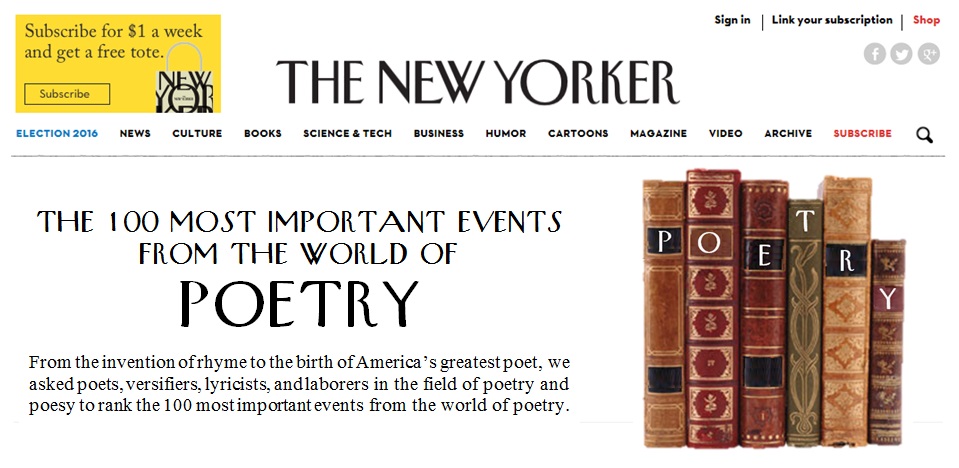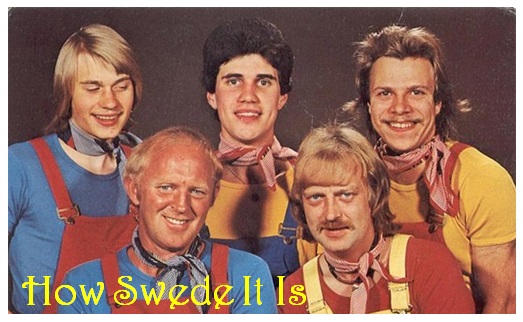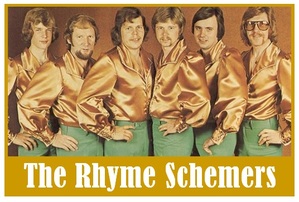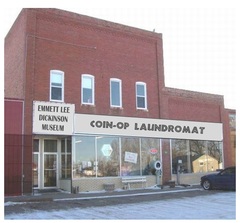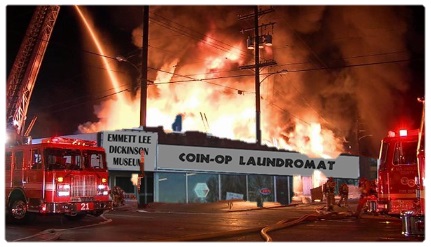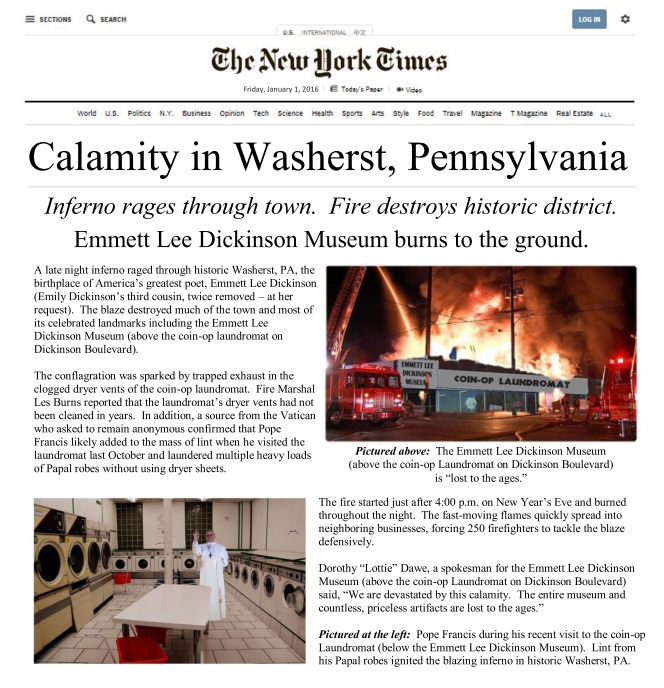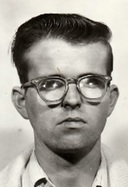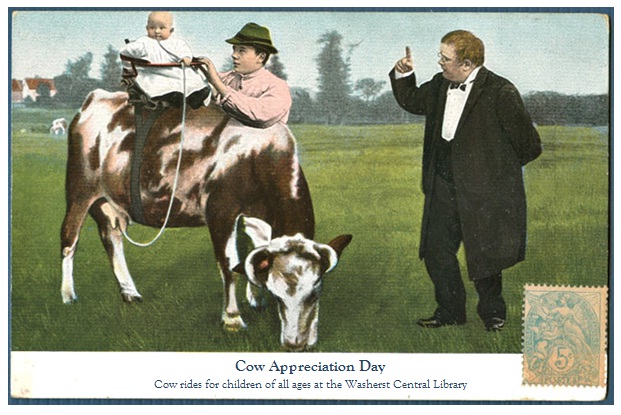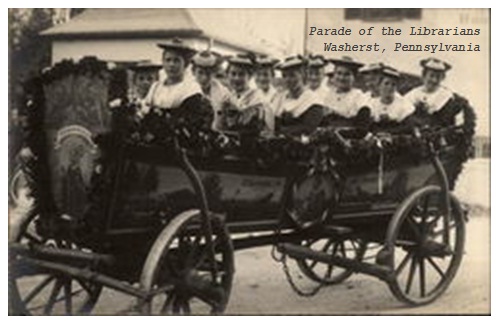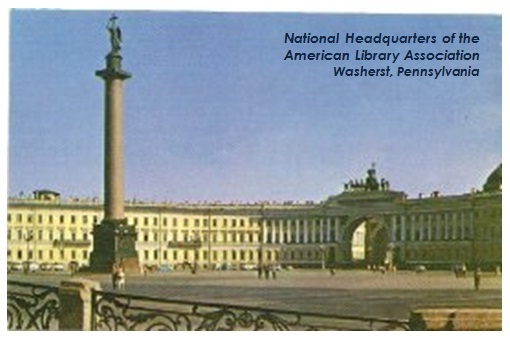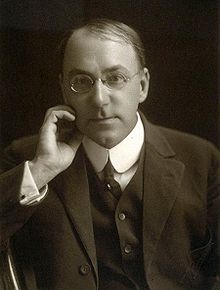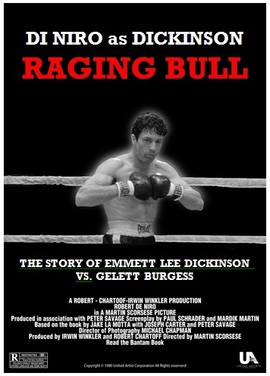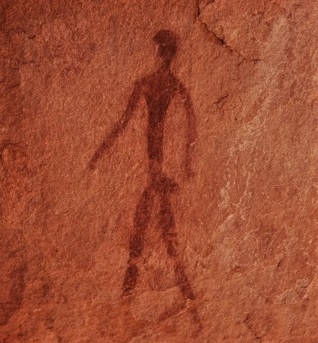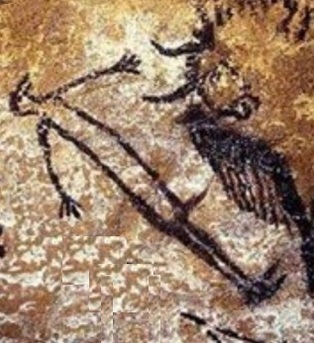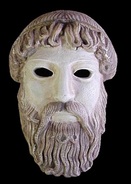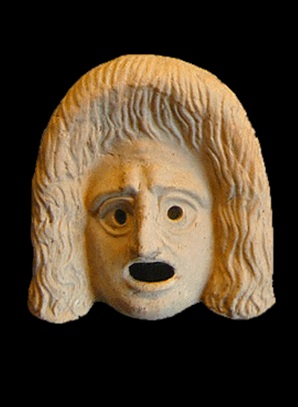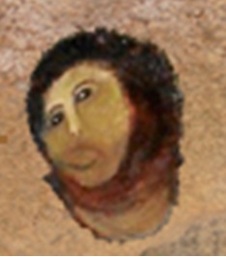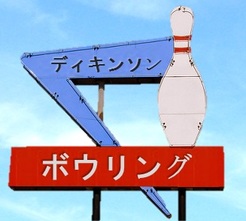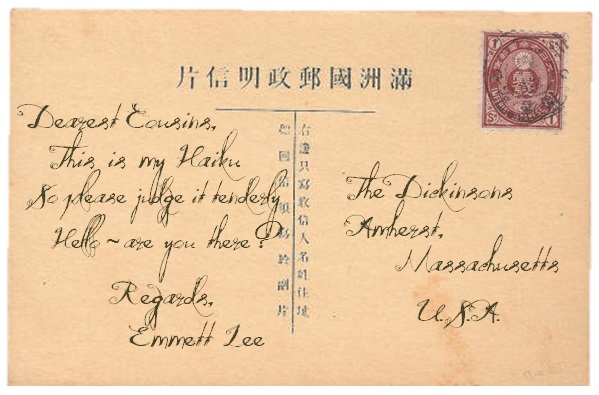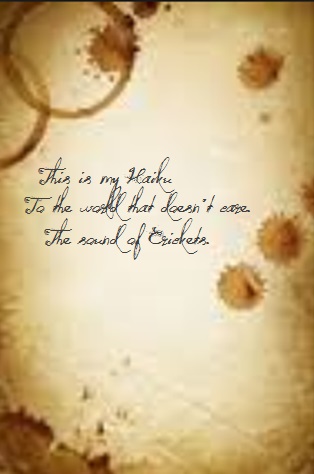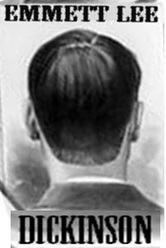The New Yorker recently ran a special report on "The Top 100 Events from the World of Poetry."
Scroll below to see the TOP TEN.
Scroll below to see the TOP TEN.
The Invention of the Poetry SlamIn the early 1900s, Hujik Dikeanssöhn ~ the son of Sweden's preeminent poet Uhmilli Dikeanssöhn ~ started the Swedish tradition of the "Pøesie Shmâcka," which translates into English as "Poetry Slam."
The tradition of the Pøesie Shmâcka continues today throughout Sweden where poetry groups go head to head as they compete for top honors. In the United States, Sweden's Pøesie Shmâckas and Pøesie Shmâcka teams helped to influence Motown, the Step-Team tradition, and modern-day poetry slams. Pictured below: Two of Sweden's top Pøesie Shmâcka's teams, "How Swede It Is" and "The Rhyme Schemers." In October 2013, we covered some of Sweden's other top Pøesie Shmâcka teams in a special ELD Museum online exhibit on Sweden's preeminent poet, Uhmilli Dikeanssöhn (a distant relative of Emmett Lee and Emily Dickinson; a contemporary branch of the Dikeanssöhn family owns and operates IKEA). For information, click HERE and scroll down to the entry on the left entitled "Pøesie Shmâckas."
More information about Pøesie Shmâckas and their originator, Hujik Dikeanssöhn, click HERE and scroll down to the entry dated April 6th. |
THE OPENING OF THE EMMETT LEE DICKINSON MUSEUMWhen the Emmett Lee Dickinson Museum (above the coin-op Laundromat on Dickinson opened in historic Washerst, PA, in 1962, both the poetry world and the architectural world went crazy for all things Emmett Lee Dickinson (Emily Dickinson's third cousin, twice removed
The New York Times said, "The Emmett Lee Dickinson Museum is a masterpiece, a deft and serious achievement. It is a magnificent contribution to Washerst’s downtown and that city’s changing cultural landscape. Unlike so much big-name architecture, it’s not some weirdly shaped trophy building into which all the practical stuff of a working museum must be fitted. Plus, patrons can do their laundry below when the visit the museum above." The Washington Post raved, "The experience of the Emmett Lee Dickinson Museum feels like a love affair with Washerst, with the Dickinson artifacts as its most significant epiphenomenon." The Wall Street Journal gushed, "In the lobby’s expansive space of concrete floor and titanic columns, the salient detail is a rather formidable detergent dispenser, a gray metal vending machine with gray tinted glass. It is well placed to suggest practicality and carefully customized design and to cast some of its refined glow over the fact that the museum is located above Washert’s down-to-earth, no-nonsense coin-op laundromat." Alas, the museum burnt to the ground when a raging inferno swept through Washerst on New Year's Eve 2015 -- a major loss to world culture! Below left: The Emmett Lee Dickinson Museum (above the coin-op laundromat on Dickinson Boulevard).
Below right: The museum was engulfed in flames on New Year's Eve at the end of 2015.
|
THE INVENTION OF POETRY MAGNETSIn 1730 Servington Savery rocked the world of magnetism and electricity when he produced the first compound magnet by binding together a number of artificial magnets with a common pole piece at each end. 250 years later, his great-great-great-great-great-grandson, Sedgewick Savery III, rocked the world of poetry when he invented magnetic poetry. Suddenly, poetry was everywhere and accessible to everyone!
For more information on Sedgewick Savery III and on poetry magnets -- including the top ten most requested words in magnetic poetry kits -- click HERE and scroll down to the entry dated April 13.
|
COW APPRECIATION DAYMost people know of Emmett Lee Dickinson’s love of corn, but few know of his appreciation of cows. Dickinson was also a great admirer of Gelett Burgess, the poet who wrote the poem “I never saw a purple cow.” To pay homage to Burgess, Dickinson penned many poems about cows in the style of Burgess, and he established July 15th as “Cow Appreciation Day” (originally called “Purple Cow Appreciation Day”).
Later, after an unusual feud centered on a competing Cow Appreciation Day, Alvina Dickinson Fillay, a relative of Dickinson's and one of the founders of the American Library Association, persuaded the ALA to endorse July 15 as the official “Cow Appreciation Day.” Libraries planned a vairety of activities to celebrate the day, including cow rides for “children of all ages.” Also, in the 1890s, the Board of Trustees of the ALA, headquartered in Washerst, PA, inagurated a spectacular "Parade of the Librarians” on Cow Appreciation Day, a tradition that continues to this day!
Below: The National Headquarters of the American Library Association in Washerst, PA, the birthplace of Emmett Lee Dickinson (Emily Dickinson's third cousin, twice removed -- at her request). A statue of Dickinson stands in front of the ALA offices. For more information on the ALA, click HERE.
|
The Emmett Lee Dickinson-Gelett Burgess FeudMariah Carey and J-Lo. Gore Vidal and Norman Mailer. David Hasselhoff and Soupy Sales. Everyone loves a great celebrity feud! And the feud to end all feuds is the infamous Emmett Lee Dickinson/Gelett Burgess feud.
At first, Dickinson was a great admirer of Gelett Burgess, the poet who wrote the poem “I never saw a purple cow.” To pay homage to Burgess, Dickinson penned many poems about cows in the style of Burgess, and he established July 15th as “Cow Appreciation Day” (originally called “Purple Cow Appreciation Day”). Burgess became somewhat exasperated with the success of his "Purple Cow" poem, so a few years later, he penned the following riposte: Ah, yes, I wrote the “Purple Cow” – I’m sorry, now, I wrote it; But I can tell you anyhow I’ll kill you if you quote it. Dickinson, though, took Burgess’ rejoinder as a lark and didn’t realize that the poet actually meant what he said – so to honor the poet, Dickinson wrote many cow poems in the style of Burgess’ original. Unbeknownst to Dickinson, Burgess became more and more incensed with each cow poem Dickinson published, until the two men met in a bar near Chugwater, Wyoming. Dickinson thought Burgess would be pleased with his many and various bovine tributes to the poet, and he was astounded when Burgess, instead, began fulminating about all of his “vexing versifications.” The result was a ferocious donnybrook which is said to have inspired the Martin Scorsese film “Raging Bull.” For more information on the Dickinson-Burgess feud and Dickinson's now-classic cow poems, click HERE.
|
THE INVENTION OF THE STRESSED SYLLABLE
|
CLASSIFICATION OF POETIC RHYTHM & METERIn 546 BC, Greek orator Imperious Pentameter classified lines of poetry by rhythm and meter.
Imperious noticed that when his wife Hysteria was composed and unruffled, she would speak in a gentle pattern of one unstressed syllable followed by a stressed syllable. Therefore, he named this pattern “iamb,” the Greek work for “serene.” When Hysteria was upset or distressed, she’d reverse her pattern and speak with a stressed syllable followed by an unstressed syllable. Imperious called this design a “trochee,” the Greek word for “nag.” Imperious named other configurations after his wife’s speech patterns as well: He called two unstressed syllables followed by one stressed syllable an “anapest,” the Greek word for “badgering.” He called one stressed syllable followed by two unstressed syllables a “dactyl,” the Greek word for “frenzied.”
|
THE DISCOVERY OF RHYMING WORDSUm Lee, the son of caveman Diggin who established an artist colony of cavemen and women in the Chauvet Cave France, was the first person known to have written poetry (see Number Five above). Of course, a major step in man’s ability to write poetry was Um Lee’s origination of the stressed syllable.
Another significant advancement in the world of poetry by Um Lee was the discovery of rhyming words. He was the first person known to rhyme two words together, and a cave painting shows an early (if not the first) rhyme when Um Lee paired the name of his friend Og with “dog,” a word he coined for the domesticated wolf he kept in his cave. He later rhymed both words with the name he gave his son, Zog. Not all of Diggin’s son’s rhymes were perfect, though. Since language was just developing, Um Lee and other cave poets struggled with the concept of rhyme, and some of the words they rhymed together were “round” and “behind,” “known” and “son,” “come” and “home,” “ring” and “sun,” and “chill” and “tulle.” Still, without the developments in language advanced by Um Lee Diggin’s Son, poetry as we know it today would likely not exist. Below left: Um Lee Diggin's Son's painting of his friend Og, and evidence of the first words rhymed by man, a significant advancement in the development of poetry.
Below right: A close up of Um Lee's cave painting of his friend Og. |
THE INVENTION OF THE HAIKUQuick. Write a sonnet about a shift in the wind, and a young sparrow turns its head because winter is coming. Go!
Well, you might as well not even start because sonnet writing is just not something that can be done quickly. No, sonnet writing is laborious. It is arduous. Fourteen lines of iambic pentameter, and it has to have a certain rhyme scheme with either a couplet or a sestet at the end. Sonnet writing is just not something that can be accomplished easily. However, how about writing a haiku about the same theme? A shift in the wind – A young sparrow turns its head. Winter is coming. Voila! There you have it! A haiku! Yes, the haiku – invented by Emmett Lee Dickinson (Emily Dickinson’s third cousin, twice removed – at her request) – suddenly made poetry writing accessible to the general public! Suddenly, everyone was (and still is) a poet!
|
THE BIRTH OF EMMETT LEE DICKINSON
We were pleased as punch when The New Yorker ran a special report on the “100 Most Important Events from the World of Poetry” – and the number one event, as determined by hundreds of poets, versifiers, lyricists and laborers in the poetry industry, was the birth of America’s greatest poet, Emmett Lee Dickinson (Emily Dickinson’s third cousin, twice removed – at her request).
More than any other poet, Dickinson has seemed the embodiment of his age, both to his contemporaries and to modern readers. In his own day he was said to be—with his best friends Abraham Lincoln, Edgar Allan Poe, and Henry David Thoreau —one of the four most famous living persons, a reputation no other poet writing in America has ever had. Outside the realm of poetry, no poet has influenced our society and culture to the degree of Emmett Lee Dickinson. The breadth and depth of his influence in the fields of medicine, politics, entertainment, education, art, music, professional sports and athletics, and even food preparation are unparalleled and certainly unequaled. Furthermore, no poet since Dickinson has tapped into so many distinctly American voices and, at the same time, so preserved his utterance against the jangle of influences. Even his most severe critics have always recognized his lyric gift for sound and cadence, a gift probably unequaled in the history of poetry, but one so absolute that it has sometimes been mistaken for mere facility. If you are new to Dickinson and are unaware of his countless contributions to our culture, we suggest you start HERE. Once you’ve perused even a fraction of these special online exhibits, we think you’ll agree with The New Yorker’s pick of Emmett Lee Dickinson’s birth as the top event in the world of poetry!
|

